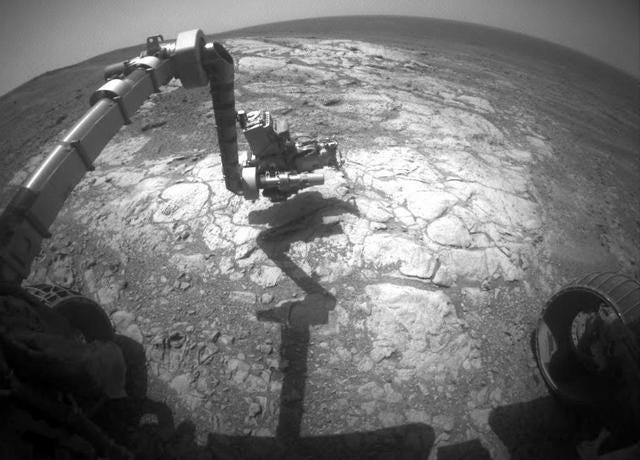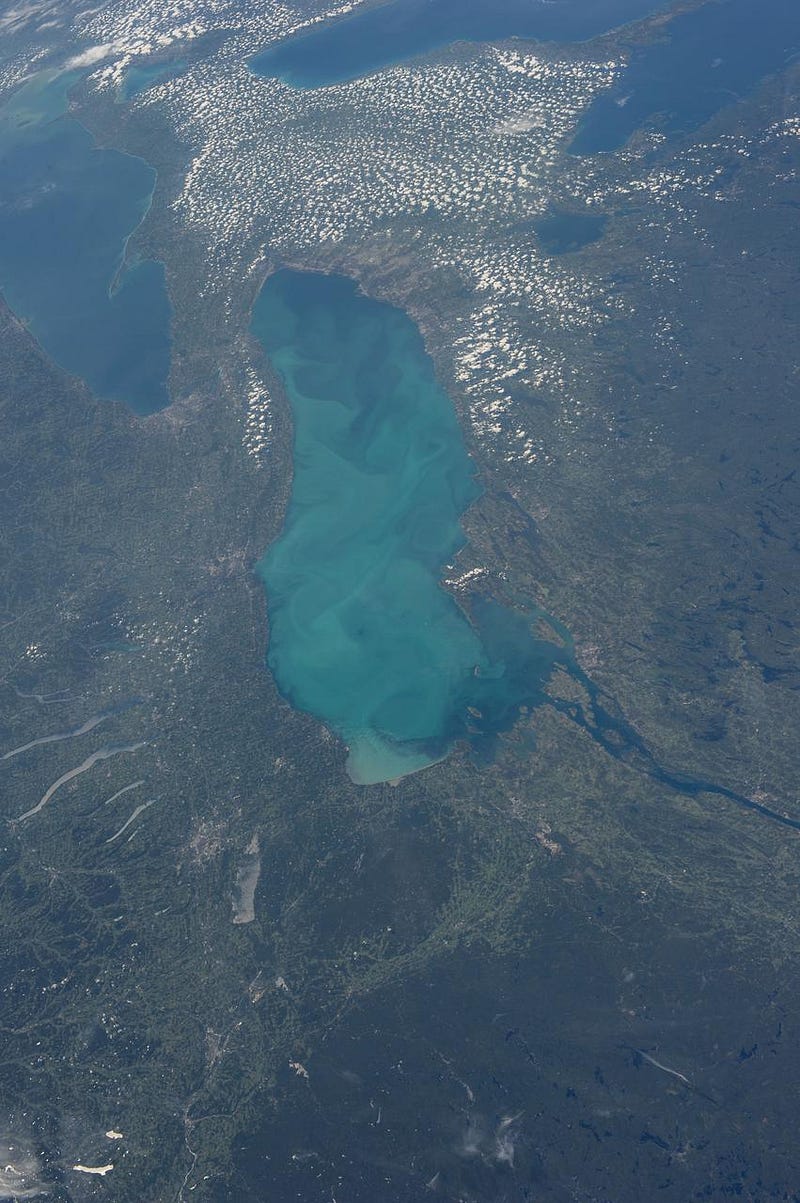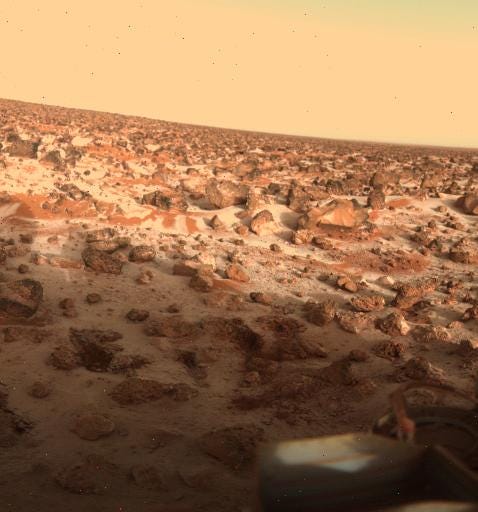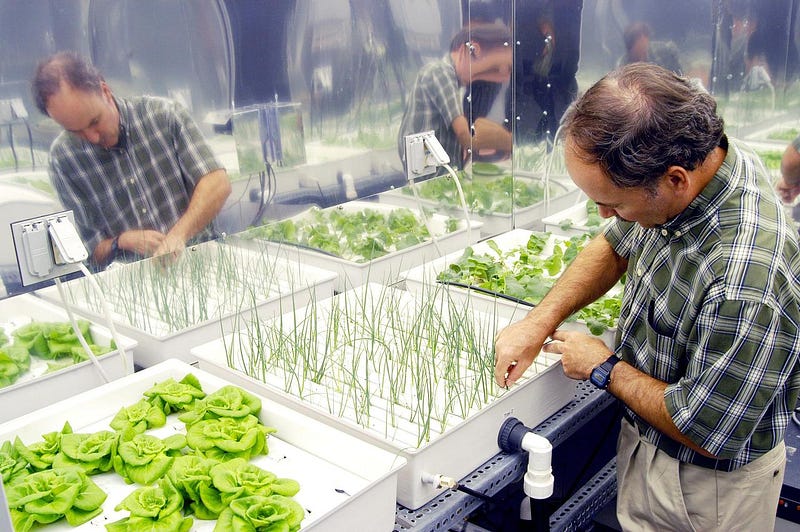Exploring the Possibility of Martian Agriculture: Is It Feasible?
Written on
Chapter 1: The Quest for Martian Agriculture
Is cultivating food on Mars a realistic endeavor? Many are familiar with the ambitious plans for colonizing and terraforming the red planet. However, the vital question remains: how will future Martians secure their food supply? Relying on continual shipments from Earth is prohibitively expensive and resource-intensive. Therefore, it's essential to explore whether sustenance can be sourced directly from Martian soil.
To cultivate crops on Mars, extensive research is required, focusing not only on the plants themselves—such as their responses to altered gravity and radiation—but also on crucial elements like water and soil conditions. According to findings from Mars rovers, the presence of water on Mars is confirmed by soil sample analyses. Moreover, sufficient quantities of frozen water exist in the Martian soil to warrant consideration of agricultural practices.

Mars Rover Opportunity Examines Bright Athens. Source: nasa.gov
Nevertheless, one of the primary challenges to initiating agriculture on Mars is the lack of essential nutrients in its soil, alongside its toxic characteristics. Interestingly, some regions may offer nutrients, contingent upon the astronauts' landing site. In such instances, the addition of fertilizers will be necessary.
When discussing soil fertility, it is essential to consider not just the soil type and moisture levels, but also the nutrient content. Higher nutrient levels correlate with greater fertility. Comparatively, there are areas on Earth with soil that is entirely unproductive.
However, access to water and relatively nutrient-rich soil alone will not suffice for effective farming on Mars. Introducing another element to stabilize conditions is crucial. Utilizing cyanobacteria, or blue-green algae, could provide the organic compounds necessary for the food system's foundation.
Cyanobacteria often pose issues on Earth due to their propensity to thrive in polluted waters, leading to a phenomenon known as eutrophication. This process results in excessive algal blooms, depleting oxygen and harming aquatic ecosystems.

Earth Observation taken during the Expedition 36 mission. Source: nasa.gov
On Mars, however, cyanobacteria could flourish in the sandy, toxic regolith by utilizing atmospheric carbon dioxide. Through photosynthesis, they would generate oxygen while mitigating carbon dioxide levels and neutralizing perchlorates—highly toxic substances that pose risks to human health. Nonetheless, it’s essential to recognize that Martian regolith is not soil in the traditional sense.
While other methods exist for soil remediation, they may be too complex for Martian conditions, given the intricate ecosystem of the soil. Nevertheless, this long-term strategy could prove viable. The immediate concern for astronauts upon arrival will be to initiate food production as swiftly as possible.
One potential solution is to establish farming within greenhouse environments, where humidity and light can be artificially controlled. Cultivating crops on Mars is more feasible than on the Moon, thanks to Mars' nearly 24-hour day and its atmospheric protection against solar flares.

Ice on Mars Utopia Planitia Again. Source: nasa.gov
Mushrooms and chickens present rational agricultural options. Mushrooms require no sunlight and help decompose organic matter, while chickens can provide meat, eggs, and fertilizer. Given the high resource demands of animal husbandry, particularly in the early colonization phases, chickens offer a balanced solution.
Additionally, soilless cultivation methods, such as hydroponics and aeroponics, have gained popularity on Earth. These techniques allow plant roots to grow in nutrient-rich water (hydroponics) or mist (aeroponics), facilitating precise nutrient control without relying on soil bacteria.
Such methods are vital because they enable vertical farming setups that optimize limited space, which is critical in enclosed environments. Moreover, they significantly reduce water usage.

KSC-04pd1312
Aquaponics could also be considered, where aquatic animals are integrated into the system. For instance, cultivating carp in rice fields is a longstanding practice. The fish consume anaerobic bacteria, lowering greenhouse gas emissions, while their waste enriches the water with nutrients, decreasing the need for synthetic alternatives.
In conclusion, while growing food on Mars may not be feasible directly in the soil, it is achievable under greenhouse conditions. However, transforming Mars into a green planet will take centuries. This timeline, though lengthy, is a fraction of the time it took Earth to develop its atmosphere. It's crucial to remember that Mars lacks a magnetosphere and faces harsh winters, so even after colonization, it will remain distinct from Earth.
If you're interested in further discussions about space, don't hesitate to subscribe to our channel and ask your questions for future articles. Your support, such as becoming a member for just $5 a month, will help us continue creating engaging content!
Chapter 2: Innovative Approaches to Martian Agriculture
In the video "How to grow food on Mars!" we delve into the innovative techniques proposed for cultivating crops on the red planet, exploring the potential of various agricultural methods.
The video "Could we ACTUALLY grow potatoes on Mars? | OVERTHINKING The Martian" analyzes the practicalities and challenges of growing potatoes in Martian conditions, providing insights into our future on Mars.